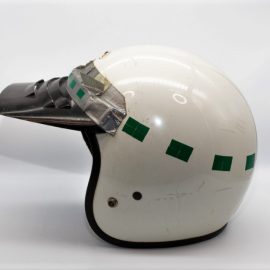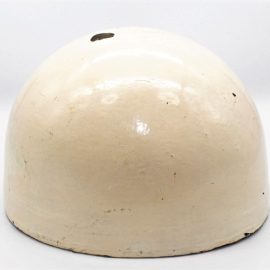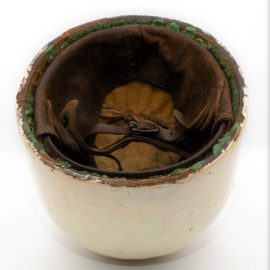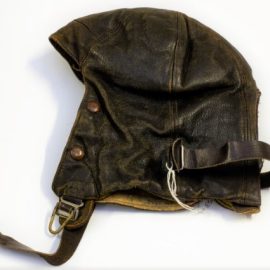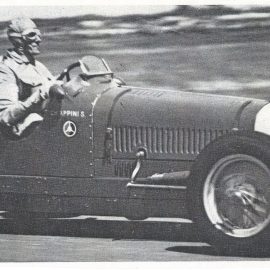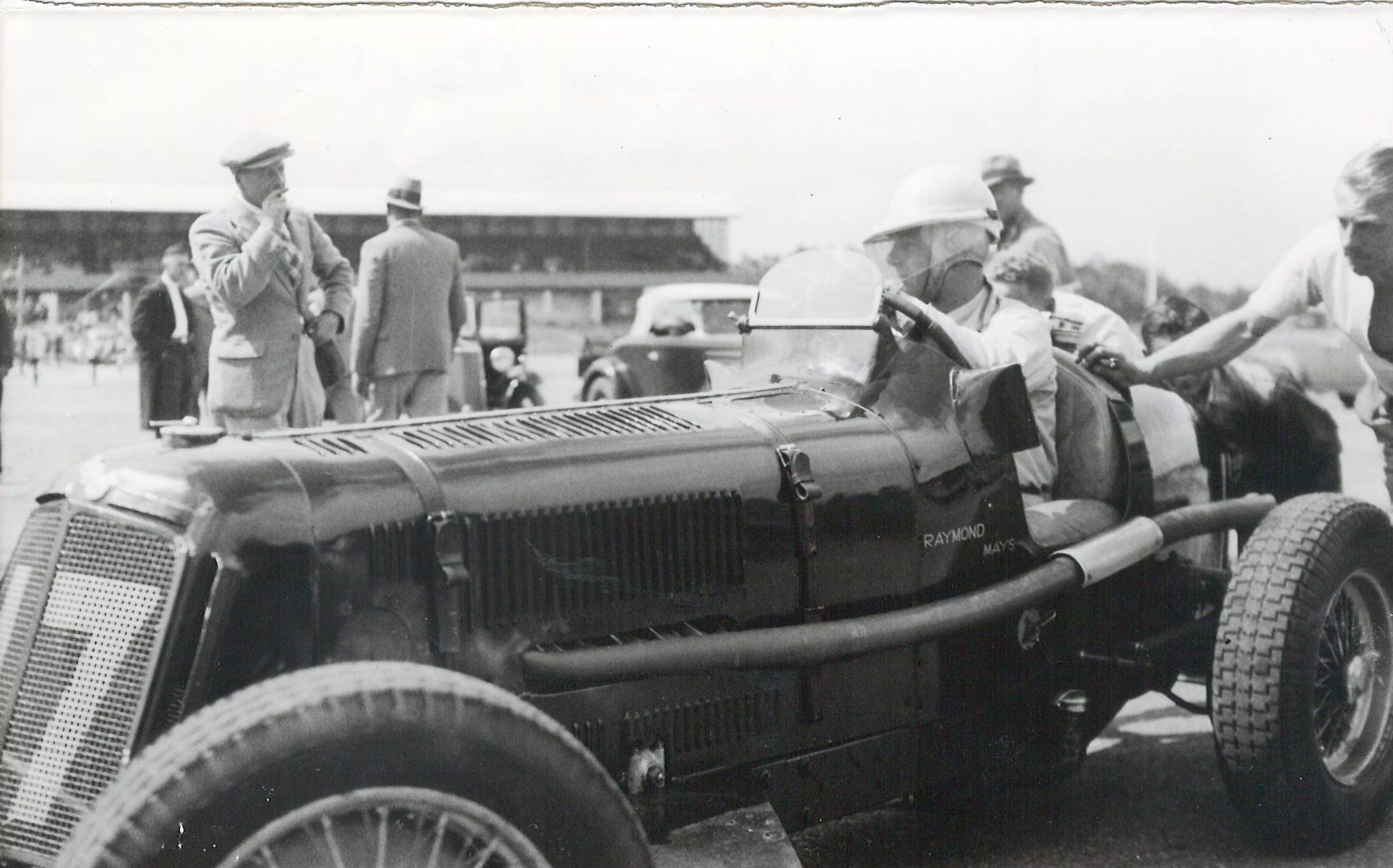
01 Mar Stories From the Stacks – Racy Head Gear
A regular series about the museum’s motoring memorabilia and behind-the-scenes activities, compiled and written by FMM’s Assistant Curator Sian Theron. This month, Sian looks at some racy head gear…
The humble helmet is an often overlooked but vital piece of motor racing equipment. When motoring first began, the initial worry was keeping the head warm and insects out of the face, and the protective nature of helmets took a while to be appreciated properly. Safety regulations were few and far between and, if looked at from a modern standpoint, pretty nightmarish. Top drivers wore flat caps and goggles to protect their eyes from dust and insects.
In the early days of motor sport, helmets were simple leather or canvas affairs; they provided some protection from the wind and rain but were of no use in the case of an accident with the skull still being exposed. The advent of the helmet came from the motorcycling crowd after a doctor, Dr Eric Grander, noticed that head injuries were the most common of all the Isle of Man TT injuries. To increase the safety of the riders, he created a bowl-like canvas and shellac helmet, which at least provided a small amount of protection, although this was far from sufficient. But, sensibly in the circumstances, the helmets became compulsory in the event from 1914.
However, motor racing continued to utilise leather and canvas caps for a long time, with drivers unwilling to move to more protective options. In 1935 with the death of TE Lawrence from head injuries after a motorcycle accident, there was more scrutiny of motoring safety. A more robust hardened helmet was developed, made of rubber and cork. These helmets became compulsory for British motorcycle riders in the Second World War in 1941.
From the 1940s, as vehicles became faster, drivers started to wear polo-styled helmets. These were still open-faced and provided no lower-face protection. Then in 1954, the Bell company created the first racing-specific helmet, the Bell 500 TX, which was made of a glass fibre laminate with interior padding. Although still open-faced, the sides did extend somewhat over the cheek area, providing more protection than any previous helmet.
After the death of driver William Pete Snell due to inadequate helmet safety in 1957, the Snell Foundation was set up and has continued to play a pivotal role in head protection for motor racing ever since. The foundation is instrumental in leading the way in technology and design and providing Snell certification for helmets.
The full-face helmet was still a good ten years away, and only came about after F1 driver Dan Gurney approached Bell to design a helmet that would protect his face as, due to his height (1,93 m), he was more exposed in the cockpit to flying road debris than the other drivers. The full-face helmet was initially not very popular as drivers felt it would be too hot and restrictive. Still, as the increased safety aspects of the design became increasingly apparent, the full-face option was soon adopted by all drivers. By the 1970s, a full-face helmet was mandatory in F1.
From the 1970s through to the ’80s and ’90s, helmets became much more personalised, with drivers putting their ‘mark’ on the designs. There were also several significant construction developments, with materials getting lighter and stronger, and air vents were added, as was fire-proof padding. By 2001 there was a weight limit of 1,25 kg, and in 2003 the HANS (Head And Neck Support) device was made mandatory to prevent injuries from the excessive g-forces drivers’ are subjected to when racing. After the freak accident where Felipe Massa was hit on the brow by a loose spring in 2007, Zylon strips were introduced to the outside of the helmets. In 2019, the FIA incorporated these Zylon strips into the overall helmet design.
With each year of racing, there are minor adjustments and innovations to increase the overall safety of helmets, as well as their comfort. When it comes to helmets, FMM has a lovely historical collection, from leather caps and goggles, which can be seen in the John Love display in Hall D, through to examples of rubber and cork helmets and, of course, several more modern designs that range from the 1970s through to the 1990s.




